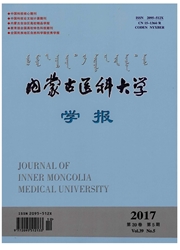

 中文摘要:
中文摘要:
目的::应用X线头影测量片分析不同垂直骨面型的Ⅱ1类病人颏部软硬组织形态特征及其差异,为正畸矫治设计及面型预测提供更可靠的依据。方法:选取我院口腔正畸科90例年龄为13~16岁未经过临床正畸治疗的Ⅱ1类骨面型青少年病人的X线头颅定位侧位片进行研究,按照垂直骨面型分为高角、均角、低角组,分析不同垂直骨面型的Ⅱ1类病人颏部软硬组织形态的特征,以及其与性别、体重指数之间的关系;并分析颏部软硬组织形态特征的相关关系。结果:三组骨性指标中颏高度、颏角、颏凹陷和颏曲度之间存在显著性差异(P〈0.05);软组织指标中软组织唇颏距离、颏唇角和软组织颏倾角等存在显著性差异(P〈0.05);软硬组织形态均与性别、体重指数无显著相关(P〉0.05);软硬组织形态特点不完全一致。结论:垂直骨面型对Ⅱ1类病人颏部软硬组织形态均具有显著影响,骨性指标与软组织指标不完全一致,正畸矫治计划的拟定以软组织标准更为可靠,矫治后病人的面型更为美观。
 英文摘要:
英文摘要:
Objective:X ray measurement is used to evaluate whether there is difference with regard to chin hard-tissue and soft-tissue morphology in ClassⅡ1 subjects with different vertical skeletal craniofacial patterns and the relationship among them for orthodontic appliance design and surface prediction to provide more reliable basis. Methods:The samples were composed of 90 cases of adolescents who denied orthodontic treatment history and presented ClassⅡskeletal pattern. They were divided into three groups according to mandibular plane angle:high angle,average angle and low angle group. Correlation was ananalyzed between vertical skeletal craniofacial pattern and chin morphology and its relationship between gender, body mass index;and analyze the relationship between hard and soft tissue morphological characteristics. Result:Chin height,angle,concavity,curvatura were showed a significant difference among three groups(P〈0. 05);lip-chin distance,lip angle and soft tissue chin angle were showed a significant difference in soft tissue index(P〈0. 05);Both hard and soft tissue had no significant correlation with gender and body mass index ( P〉0 . 05 );The hard and soft tissue morphological characteristics is not completely consistent. Conclusion:Vertical bone surface have significant effect with chin hard and soft tissue in classⅡ1 patients,bony and soft tissue indicators are not completely consistent,orthodontic treatment plan of soft tissue standard is more reliable and correct-ly.
 同期刊论文项目
同期刊论文项目
 同项目期刊论文
同项目期刊论文
 期刊信息
期刊信息
